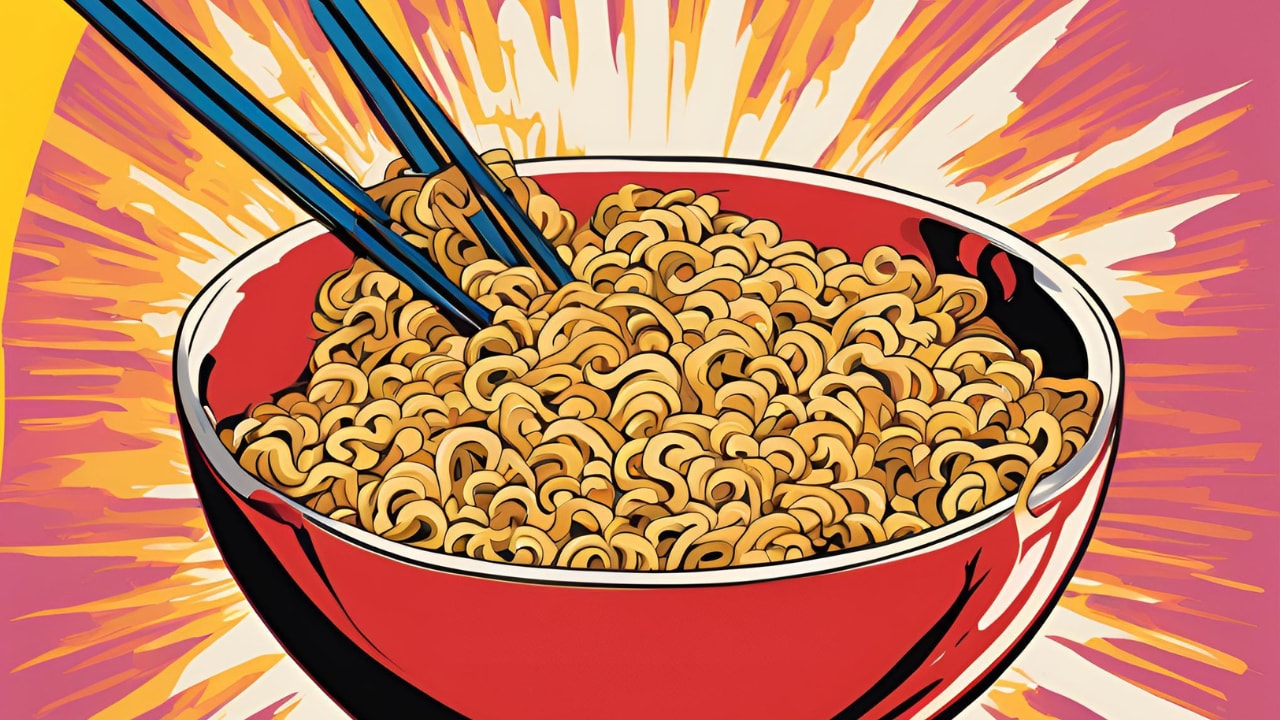In recent years, the Indian instant noodle market has undergone a remarkable transformation, with Korean instant noodles quickly becoming a staple in the nation’s pantries. This shift has been largely driven by the rising influence of K-culture—spanning K-pop, K-dramas, and Korean cuisine—creating a surge in consumer demand for authentic Korean flavors.
According to Rupali Rattan, Director of Foods at Nestlé India, the market is evolving with new and exciting flavors, largely spurred by social media trends and the increasing availability of products through online platforms. “Indian consumers have shown a willingness to experiment with different tastes, making Korean noodles particularly enticing. As a trusted name in households for over four decades, MAGGI embraced this change by launching a range of Korean-inspired noodles, including packaging that mirrors the fiery red iconic to Korean noodle culture,” she told Storyboard18.
The instant noodles industry in India is experiencing explosive growth. The market, valued at $1.8 billion in 2023, is projected to reach $3.8 billion by 2028, with an annual growth rate of 15.3%. One of the driving forces behind this surge is the growing popularity of Korean noodles. NielsenIQ data shows a striking 400% year-on-year growth in the sales of Korean instant noodles, which skyrocketed from Rs 2 crore in 2021 to over Rs 65 crore in 2023. The broader instant noodles market is driven by urbanization, higher disposable incomes, changing lifestyles, and an increasing preference for quick, convenient meals.
International brands such as Samyang, Nongshim, and Ottogi have capitalized on this trend, offering signature spicy products like Buldak noodles and Shin Ramyun, which have become particularly popular among spice-loving Indian consumers. The power of social media food trends, YouTube influencers, and online grocery platforms has only fueled this demand, while the Indian market is dominated with giants like market-leader Maggi, Nestle’s flagship brand.
As global demand for Korean noodles soars, foods companies are also making strategic moves to capitalize on the trend in India. For instance, Knorr tapped into the cultural phenomenon of “Squid Game” with a campaign featuring limited-edition Squid Game-themed packaging and an interactive slurping game, which resonated with the brand’s younger demographic.
Veeba, known for its sauces, has also entered the competitive arena with the launch of WokTok, a high-end instant noodle brand targeting consumers willing to pay more for premium, global flavors. “WokTok’s marketing strategy embraces experimentation, connecting with India’s modern, adventurous, and tech-savvy consumers who crave bold flavors,” said Viraj Bahl, Founder and Managing Director of VRB Consumer Products (Veeba and WokTok). The brand’s aim is to push boundaries by collaborating with influencers and engaging in social media challenges that inspire consumers to try new, exciting tastes.
Meanwhile, HUL’s Priyanka Ganguly, Head of Foods and Food Services, notes the nuanced consumer preferences for specific Korean noodle flavors. “While we initially expected Kimchi to be more popular, both Kimchi and Jjajangmyeon have performed equally well. Our recent Gochujang flavor launch has also been met with enthusiastic responses, particularly among younger audiences, who are driving the growing popularity of Korean cuisine in India,” she said.
The rise of e-commerce and quick commerce platforms has played a crucial role in making Korean noodles more accessible to Indian consumers than ever before. These digital channels allow consumers to discover, compare, and purchase products at their convenience. However, traditional trade channels like General Trade and Modern Trade remain important touchpoints. Kavita Chaturvedi, COO of Snacks, Noodles & Pasta at ITC Foods Division, highlights the significance of both retail and digital platforms in this evolving landscape. “E-commerce and quick commerce platforms have certainly accelerated the adoption of Korean noodles, especially in metropolitan areas and beyond,” she explained, adding that Korean noodles have become a prominent segment in quick commerce, catering to the digital-native consumer base.
As the instant noodle market in India continues its upward trajectory, the growing influence of Korean flavors—alongside evolving consumption habits and the fusion of global trends with local tastes—indicates a new culinary era for India’s diverse and dynamic food culture.
